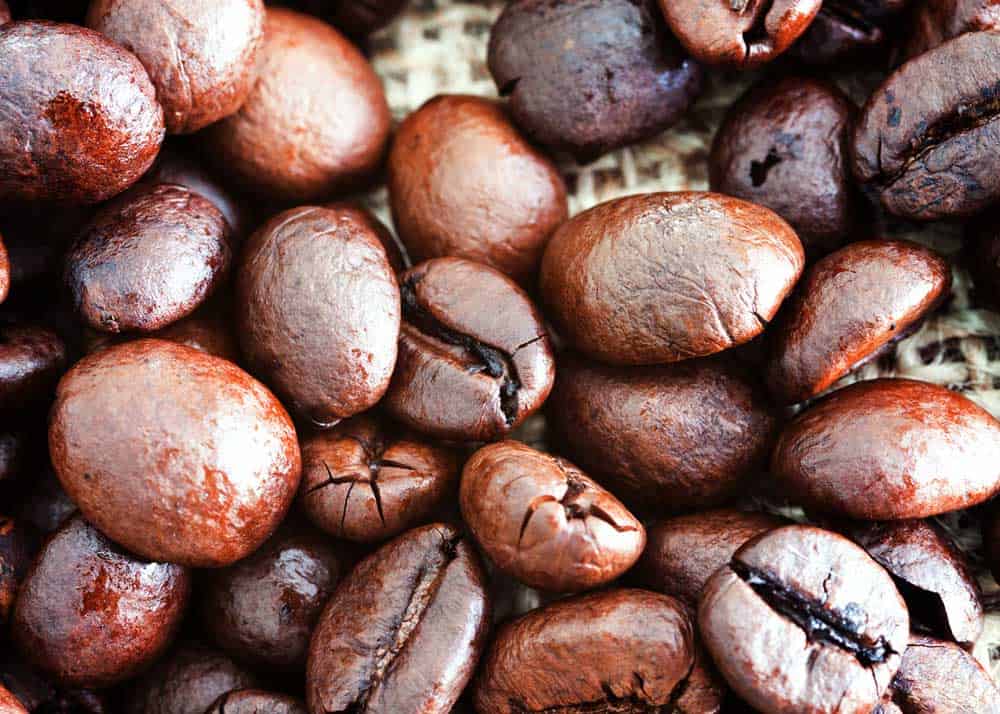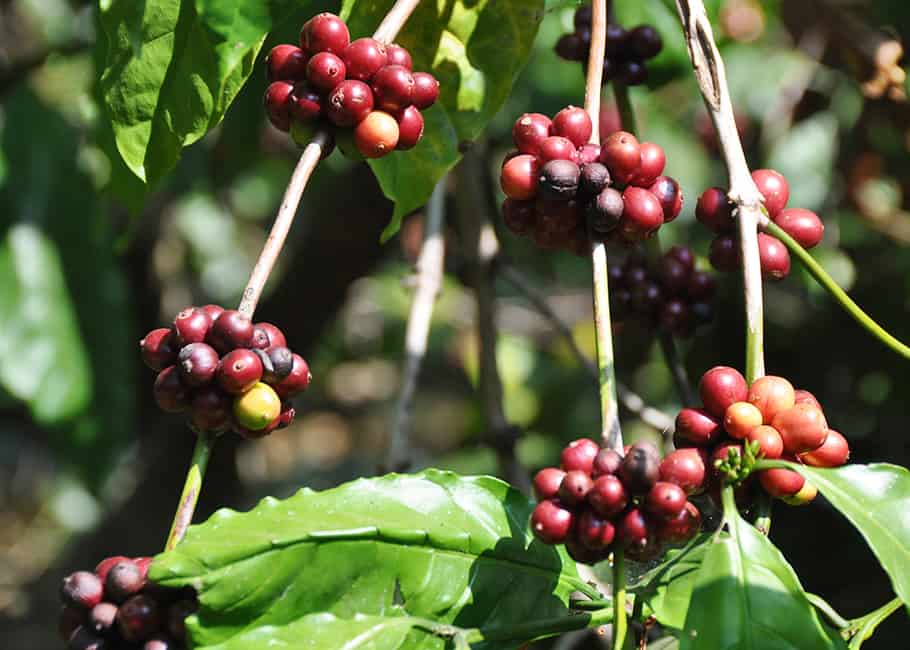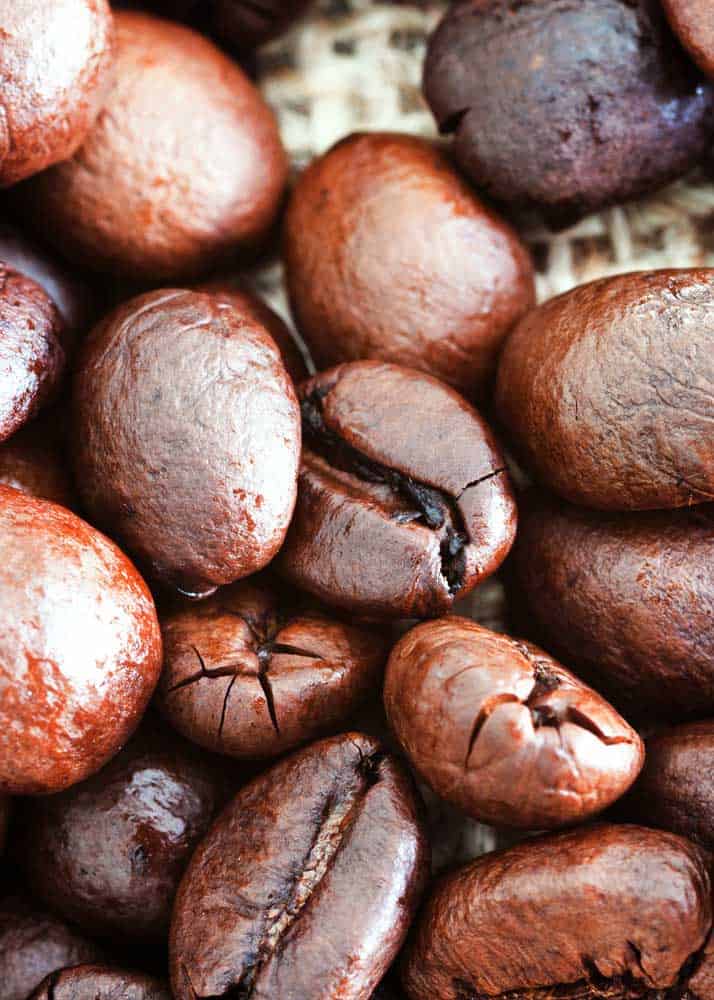How many types of coffee beans are there? And what makes them different? In this post, you’ll learn about the 4 coffee bean types. And the specific characteristics of each bean. Which type will you try next?

Table of Contents
4 Types of Coffee Beans
A good cup of coffee isn’t just about how you brew it. It actually begins with which coffee beans are used.
Did you know that coffee beans are not really beans at all in the sense that we normally think of beans? Coffee beans are actually the seeds from the fruit of coffee plants that are often called cherries.
The flavor of the seeds/beans is influenced by where they are grown. Let’s learn a little more about that.
5 Factors Affecting Taste and Texture
There are numerous types of coffee beans grown around the world, and even before they are ready to be roasted and brewed, there are many different factors that determine the resulting taste and texture.
Some of these factors include:
- Environment (Where the beans are grown: region, altitude, climate, and soil type)
- Farming practices (Chemicals used, planting patterns, picking time, etc.)
- Age of harvest (Freshness of crop)
- Processing (Different methods of washing, drying and roasting)
- Bean variety (See the various types of coffee beans below).
Here are the four varieties of coffee beans.
1. Arabica
You’re probably familiar with Arabica coffee beans. Due to its sweet, mild taste and delightful aroma, it’s among the most esteemed types of coffee beans in the world, comprising between 60% and 70% of the world’s coffee production.
Many describe Arabica as having sweet, chocolaty, and nutty flavor notes.
Arabica is considered the “original coffee bean” because it’s derived from the first coffee trees that were cultivated in Ethiopia during the 9th century. Although it originated in the Middle East, Arabica coffee is now grown in many areas, especially in Colombia.
Arabica is more expensive to grow than other types of coffee beans because it’s finicky about its growing conditions.
It prefers high altitudes, mild temperatures, and rich soil. This bean type is also prone to disease, so it requires extra tender loving care and attention.

2. Robusta Beans
Compared to arabica, robusta coffee is considered inferior due to its strong, bitter taste that’s also described as harsh and earthy.
An interesting fact about robusta coffee beans is that they contain twice the amount of caffeine as arabica.
Grown mostly in Africa and Southeast Asia, robusta only accounts for about 30% to 40% of the world’s coffee market, and much of that is used in coffee blends and instant coffee.
However, the good thing about robusta is that it’s a hearty plant that’s resistant to diseases and parasites and can withstand warmer climates.
Good quality robusta adds a nice crema to a great espresso shot. And it’s very popular in Vietnamese coffee.
A great-tasting robusta can have a pleasant earthy flavor with notes of bitter chocolate and dark roasted almonds. But if it is not high-quality robusta can have an unpleasant bitter flavor sometimes compared to burnt rubber.
3. Liberica Beans
Liberica accounts for just a small minority of the world’s coffee but can probably be considered the third most popular.
It is native to western and central Africa, one of the major countries being Liberia – thus the name Liberica. It’s also grown in Central and South America and the Philippines where it is most popular in a blend called Barako.
This type of coffee takes longer to grow than Arabica. Arabica coffee cherries take 9 months to mature, Liberica takes 12 to 14 months from flower to ripe cherries. The Liberica trees are also larger and more robust with larger leaves and cherries than Arabica and Robusta.
Very bold and aromatic, Liberica features a strong and fruity taste.
The following video shares some interesting facts and gives a good look at the Liberica coffee plant.
4. Excelsa Beans
Excelsa coffee beans contribute to about 7% of the world’s coffee production. It has recently been re-classified as a variety of Liberica coffee.
This type of coffee grows mostly in South East Asia. The beans look similar to those of the Liberica plant but are smaller.
It’s often used in house blends of Arabica and Robusta to add complexity and boasts a distinct flavor that reminds you of tart fruit.

Learn more about different types of coffee.
Your Turn
Have you tried all these types? Which type of coffee bean do you want to try next?
- About the Author
- Latest Posts
Dena Haines is a co-founder and blogger on EnjoyJava – and is working to make it the best coffee blog in the world.
She also blogs about travel at Storyteller.Travel and photography at Storyteller Tech. Dena is a partner at Storyteller Media, a publishing company she started with her husband, Bryan.
